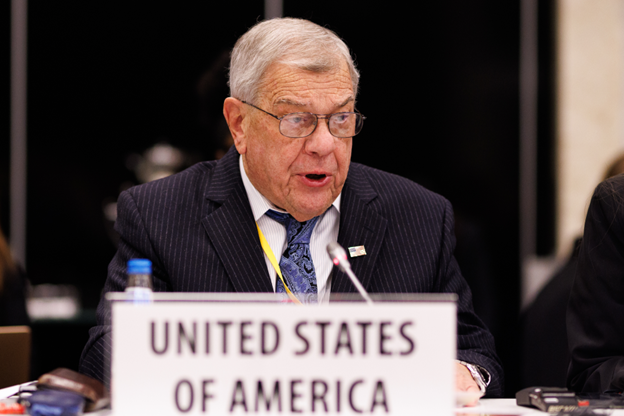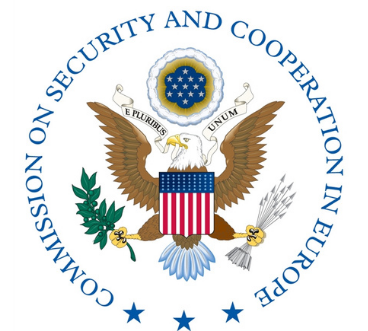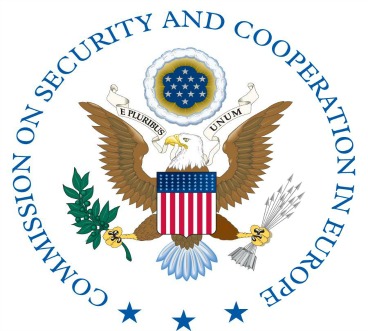Washington – United States Helsinki Commission leaders today remembered the anniversary of the Romani Holocaust observed annually on August 2nd and 3rd.
During the night of August 2-3, 1944, the Romani camp at Auschwitz-Birkenau was liquidated. Nearly three thousand Romani men, women and children were killed in the gas chambers in a single night. Roma around the globe have come to remember their Holocaust experiences on these days.
“The single most defining experience for Roma in the 20th century was the Holocaust, known in Romani as the Porrajmos, the Devouring,” said Helsinki Commission Chairman Senator Ben Nighthorse Campbell (R-CO). “During World War II, Roma were targeted for death by the Nazis based on their ethnicity. At least 23,000 Roma were delivered to Auschwitz. Almost all of them perished in the gas chambers or from starvation, exhaustion or disease.”
“The Helsinki Commission held our third hearing on Roma in April of this year,” said Commission Co-Chairman Rep. Christopher H. Smith (R-NJ). “Testimony at these hearings reflected the magnitude of the discrimination and violence still confronting Roma in many countries. Violent attacks against Roma, including murders, often go unpunished, such as the arson murder of a family of five in Ukraine last October.”
“At the 1999 Istanbul Summit, the Organization for Security and Cooperation in Europe participating States agreed to adopt anti-discrimination legislation to protect Roma,” said Commission Ranking Member Rep. Steny H. Hoyer (D-MD). “The adoption in 2000 of the European Union’s ‘race directive,’ which requires all EU member states and applicant countries to adopt comprehensive anti-discrimination legislation, should spur this effort.”
In certain countries, political leaders use Nazi-era rhetoric, describing Roma as “asocial,” or defending repressive measures against Roma as “social hygiene measures,” implying that they are inherently unfit for European society. More than half a century after Roma suffered forced sterilization at the hands of Joseph Mengele and others, some public officials openly speak of limiting Romani birth rates.
Roma were among those targeted for complete annihilation by the Nazis; however, their suffering before and during World War II is not well known. During the 1920s and 1930s, institutionalized racism against Roma took on an increasingly virulent form. Policies similar to those instituted against Germany’s Jews were also implemented against Roma:
race-based denial of the right to vote;
forced sterilization;
loss of citizenship, incarceration in work or concentration camps;
deportation and subsequent annihilation at death camps.
In addition to their systematic destruction at Auschwitz, Roma were killed elsewhere in German-occupied territory by special SS squads, regular army units or police, often shot at the village’s edge and dumped into mass graves.
It is difficult to estimate the size of the pre-war European Romani population and war-time losses. Some scholars, however, suggest the size of the Romani population in Germany and German-occupied territories was around 942,000 and that 500,000 Roma were killed during the Holocaust. Approximately 25,000 Roma from Romania were deported en masse to Transnistria in Romanian-occupied Ukraine in 1942; some 19,000 of them perished there.
After World War II, the post-Nazi German Government strongly resisted redressing past wrongs committed against Roma, seeking to limit its accountability. The first German trial decision to recognize that Roma as well as Jews were genocide victims during the Third Reich was not handed down until 1991.
Public awareness of the nature and extent of Romani losses continues to expand as new archival material becomes available and new generations of researchers examine the Holocaust experiences of Roma.
The Helsinki Commission maintains on its Internet Web site an archive of hearing and briefing publications, Congressional Record Statements, reports, press releases and CSCE Digest articles; each organized by issue and country. Commission materials relating to Roma are located on the Commission’s Roma Web page.
Additional information about the Romani Holocaust experience is available through the U.S. Holocaust Memorial Museum.





